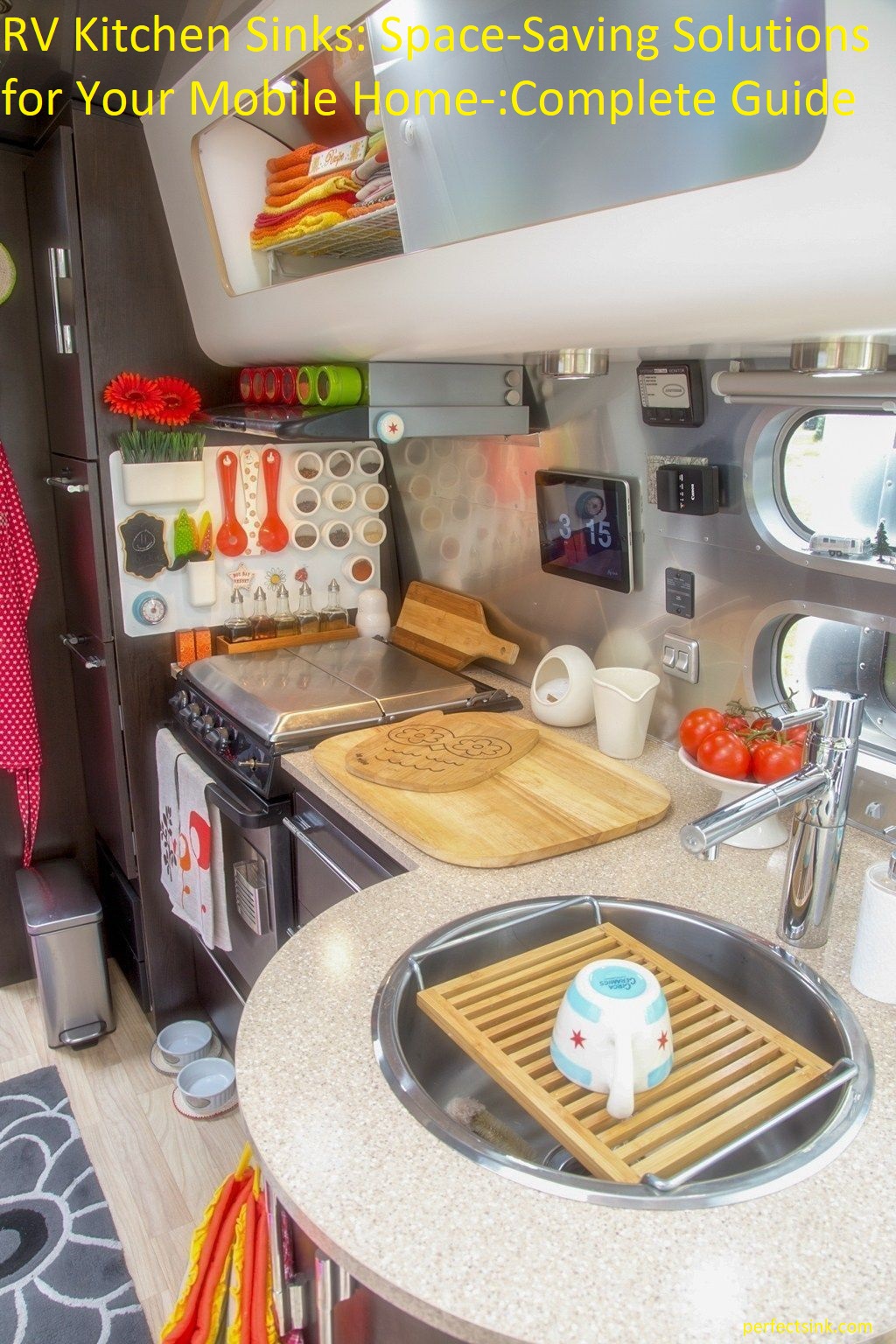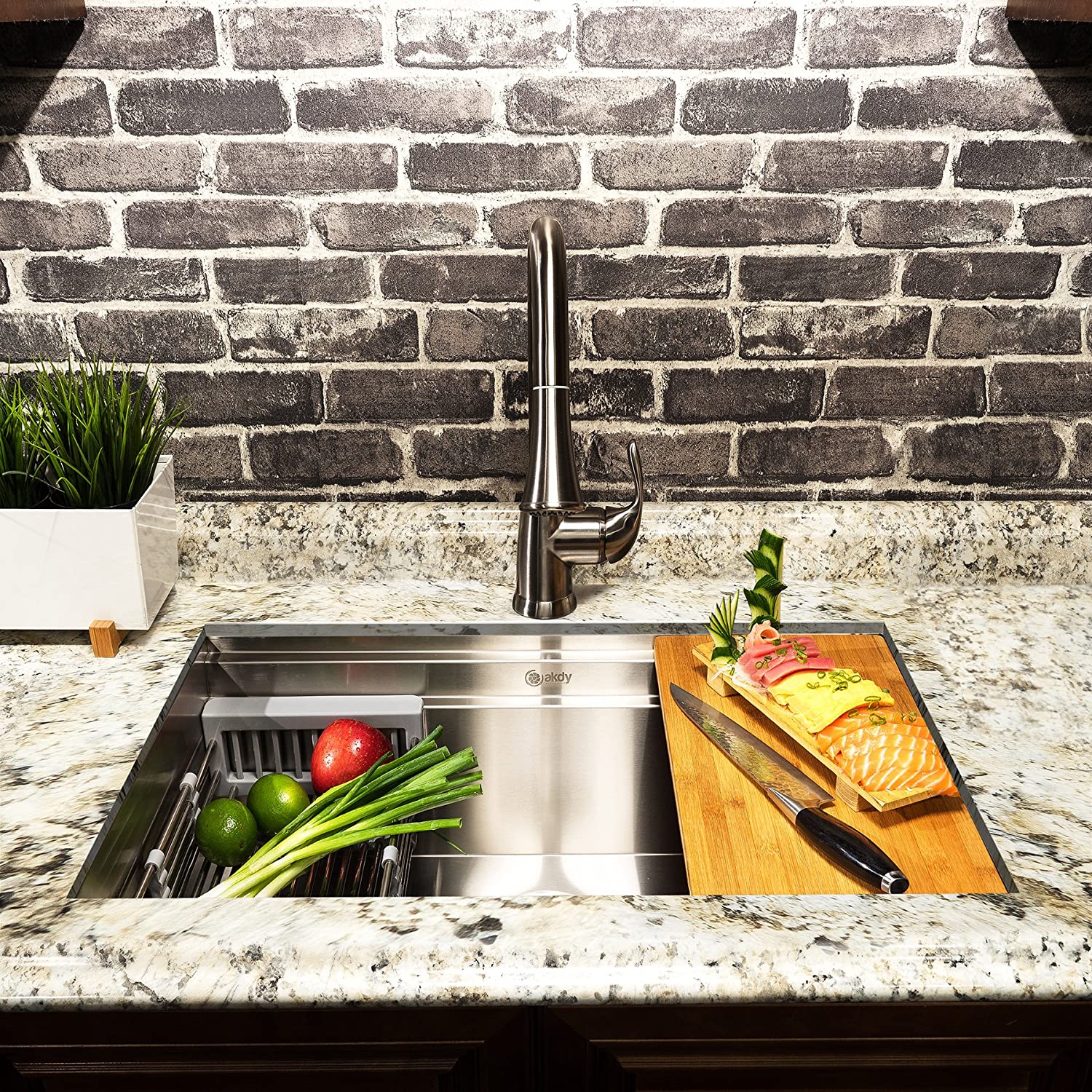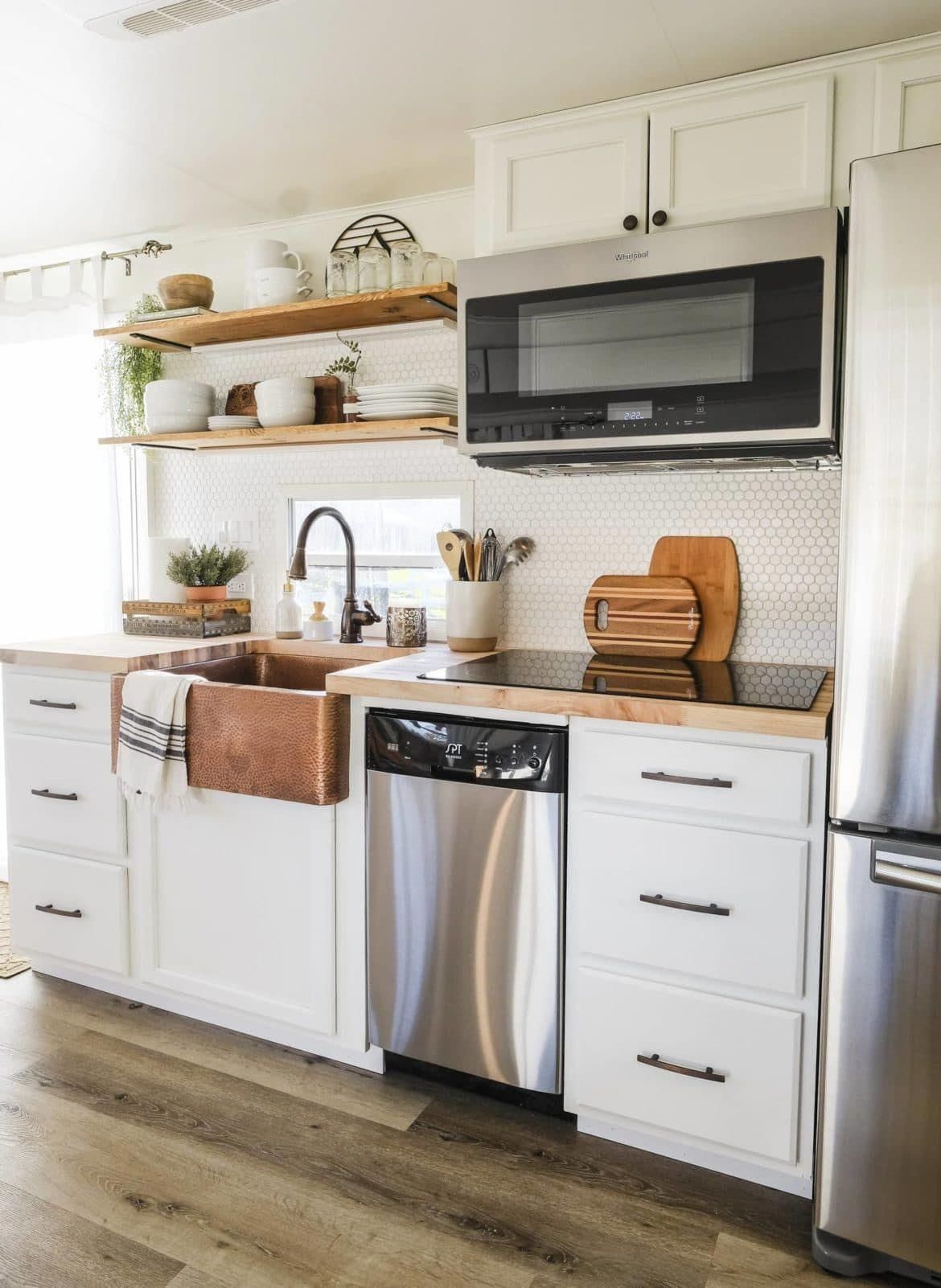Are you looking for a space-saving way to add a kitchen sink to your RV? Do you want to maximize convenience and utility in your mobile home? Look no further!
This comprehensive guide has all the information you need on RV kitchen sinks, helping you make the best choice for your needs.
Welcome to your complete guide on the best RV kitchen sink solutions for mobile home traveling. When deciding on a fresh kitchen look and feel, your RV sink is an area that should not be overlooked. Whether you are remodeling or looking for a new product to suit your travelling lifestyle, this guide will help you find the perfect solution.
This guide will provide an overview of the most popular RV kitchen sinks, as well as important considerations when shopping for one. We will also go over practical advice on how to install them and preserve their beauty over time. By the end of this guide, you will have all of the knowledge necessary to determine which sink is right for you and your mobile home. So let’s begin!

Definition of RV Kitchen Sinks
RV kitchen sinks are sinks specifically designed for recreational vehicles which are much smaller than traditional residential kitchens. They must be made of durable materials to stand up to the wear and tear of travel. In order to save space, these sinks usually have smaller bowls and shallower depths than normal-sized kitchen sinks, and can sometimes even fold down or be attached directly to the wall. Having a sink in your RV is essential not only for washing dishes but for cleaning up after meals, as well as bathing small children on longer trips. Reducing the need for extra camping gear or bathtubs also decreases costs.
Once you have determined that an RV kitchen sink is necessary, there are some other factors to consider when choosing one; style, size, installation options and cost are important things to take into account too. Investing in a quality product will save you time and money in the long run due to its increased durability over cheap alternatives. To help you make an informed decision when selecting your RV sink, we have compiled all of the necessary information available below!
Materials Used in RV Kitchen Sinks
When it comes to materials used in RV kitchen sink production, manufacturers have multiple options available. Generally, stainless steel and composite acrylic make up the most popular picks. There are benefits to each material, as well as associated drawbacks that can make one type of material more suitable than another for a specific RV kitchen environment. We have broken down the pros and cons below in order for you to make the most informed decision for your mobile home’s sink needs.
Stainless Steel Sinks:
-Advantages: Durable, resistant to scratches and chips; larger selection of sizes and shape available; easily coordinated with other stainless appliances
-Disadvantages: Prone to developing water spots; hard to clean if something is burned onto the surface
Composite Acrylic Sinks:
-Advantages: Lightweight, stronger compared to stainless steel; impervious to stains and chips; versatile selection of styles and sizes available
-Disadvantages: Can be difficult to match with other appliances due not being able to coordinate finishes
Stainless Steel

For those looking for a smart investment when outfitting their RV kitchen, stainless steel sinks are an obvious choice. Their popularity and longevity have earned them the nickname “the workhorse of the kitchen” — they’re widely known as the toughest, most resistant sink material on the market. Non-porous and dense, stainless steel is also very hygienic; it’s easy to keep clean with regular maintenance and basic everyday products for cleaning and polishing.
Not only does stainless steel resist rust and corrosion, but it prevents staining from coffee, tomato sauce or acid from fruit juice. Stainless steel sinks aren’t porous like other materials such as cast iron or composite granite which can trap dirt or bacteria. The biggest advantage of this material is that it doesn’t chip or crack—and that makes it a very attractive product for RV kitchens where space is always at a premium. By choosing a stainless steel sink for your mobile home you can enjoy years of durable use with very little maintenance required.
Acrylic
- Acrylic is a versatile and lightweight material that lends itself well to RV sinks. It’s very durable and can stand up to the wear and tear of travel. Acrylic sinks are also available in many styles, shapes, and configurations to suit a variety of needs. Many also come with optional features like overflow valves or basket strainers for added convenience. The smooth surface of acrylic is easy to keep clean and requires little maintenance over time.
Acrylic is also a great option for smaller RV kitchens because it won’t take up too much space in the room, making it an ideal choice for those wanting to save on space without sacrificing function or style.
Factors to Consider when Choosing an RV Kitchen Sink

When considering how to choose an RV kitchen sink that is best suited for your mobile home, there are a few things you will want to consider. You’ll want to take into account the size and shape of your existing countertop, as well as what sort of plumbing components you already have in place or will need to purchase.
Replacing an integral part of your kitchen is an important decision and one you should take the time to plan thoroughly. When selecting an RV kitchen sink, you’ll need to consider the following factors:
- Size: Choose a sink size that suits your needs and complements the rest of your kitchen design. The space where your mobile home’s sink will be installed will determine its size.
- Shape: Kitchen sinks come in many shapes including oval, rectangular and round. Round sinks are installed into a corner, while rectangular sinks fit better in wall-mounted cabinets with their extended corners. Consider which shape better fits with the shape and size of your existing kitchen layout for maximum efficiency and aesthetic appeal.
- Material: Most RV sinks are made from stainless steel or plastic, with Stainless steel being the preferred choice for durability and longevity. It’s important that whatever material you choose is durable if it’s going to last years on the road!
- Mounting Style: Sinks come in either drop-in or undermount styles. A drop-in style sits above the counter, while an undermount style sits below it. Drop-in sinks can provide easier installation without creating extra work for yourself but provides slightly less space than an undermount option would provide due to its raised rims around the edge of the sink basin itself.
- Installation Type: The last thing to consider when choosing a new RV kitchen sink is whether you want one with self-rimming edges or one that requires drilling into installation holes drilled in advance in order for it sit flush against the underside of your countertop – this also includes countertops made from solid surface materials such as Corian®.
Size and Shape
When it comes to RV sinks, size and shape are important elements to consider. They directly affect the amount of space you’ll have available for all your kitchen tasks. While many RV kitchens are small in size, there are still options when it comes to choosing a kitchen sink that fit your needs.
RV kitchen sinks come in two basic shapes: rectangular or circular. Rectangular sinks tend to provide more space to work, while circular sinks can look nicer but will take up more countertop space. Additionally, they often come in a single bowl or double bowl format with large bowls being more suitable for larger spaces, while smaller bowls may be better suited for tight areas with limited counter space. This allows you to select the best one depending on your particular layout and requirements.
Depth
When shopping for a kitchen sink for your RV, one of the most important considerations is the sink’s depth. Having a shallow kitchen sink in an RV can be very limiting, as it can be difficult to fit larger pots and pans in a sink that’s too shallow. On the other hand, having a deeper kitchen sink makes it easier to wash large dishes and stack them up without them taking up too much counter space.
Most RV sinks range from 7-9 inches deep, with some even reaching as deep as 10-12 inches.
Installation Method

Before you buy an RV kitchen sink, you must first understand the installation method you have available. Most RV sinks are mounted in one of two ways: drop-in and undermount.
Drop-in sinks are the most common option as they can be easily installed into a pre-cut hole of your kitchen countertop. In addition, they allow for adjustments to be made should there be any discrepancy between the size of the hole and sink, which is a concern when dealing with a mobile home. Drop-in sinks come in both one and two bowls varieties, so this could also help meet your space saving needs.
Undermount sinks are installed below the countertop level instead of above it, creating a sleek look and helping conserve valuable workspace on the countertop. They require precise measurements to ensure that all measurements align as designed once installed; otherwise accuracy issues can arise with water run off not draining correctly due to tight spaces or uneven levels between surfaces. Additionally, care must be taken so that all edges are sealed once installed to prevent water penetration through any gaps which may occur from cutouts being off level during installation. This method may require more intricate care and attention; however, it can offer superior results if successfully implemented.
Maintenance and Cleaning Tips for RV Kitchen Sinks
Regular cleaning and maintenance of your RV kitchen sink can help keep it looking and feeling new. Below are some recommendations on how to do just that.
-Clean the surface of the sink with mild, non-abrasive detergents for everyday cleaning.
-For tougher stains, use only specialized cleansers along with a soft cloth or sponge and warm water. Avoid using steel wool or any other abrasive cleaners that could damage the finish of your sink.
-Rinse the sink with warm water and dry it afterward to prevent water spots from forming.
-When washing dishes ensure to use a gentle detergent and never leave standing water in the basin for more than 15 minutes.
-If food debris is stuck to the surface of your sink, use a plastic spatula to scrape it off first before wiping it down with a damp cloth soaked in soapy water.
-Check periodically underneath the sink for any signs of build up or mold growth which should be removed immediately with a mixture of bleach and warm water followed by drying thoroughly afterwards.
Use baking soda mixed with vinegar at least once every month as an effective deoderizer as well as to help avoid hard deposits building up on your kitchen sinks surface over time.
Proper Use
Using RV kitchen sinks is different than a regular home sink. With the mobile lifestyle of your RV, it is important to limit the amount of weight each item adds to the overall load. The key to using RV kitchen sinks efficiently is proper maintenance and use. It is essential to take excellent care of your sink if you want it to last. It is also important to read instruction manuals and manufacturer’s directions for correct usage to ensure that you make the most out of your sink and prevent any damage or accidents.
To properly use an RV kitchen sink, follow the following guidelines:
- Fill up only with warm water when washing dishes
- Designate one sponge for dishwashing and another for other cleaning tasks
- Limit all liquids poured down the drain as much as possible
- Clean your sink regularly with soapy water and a soft cloth
- Check for drip marks or swelling around taps joints regularly
- Ensure that all detergents used contain non-toxic chemicals
Conclusion
As you can see, there are many great space-saving solutions available when it comes to RV kitchen sinks. By considering the different types of sinks that are available, as well as the different features they offer, you can easily find a sink that best fits your needs and lifestyle.
No matter what type of sink you decide to install in your RV kitchen, it is important to remember to take good care of it. Regularly cleaning and maintaining your sink can help ensure that it lasts for many years to come. Additionally, if you ever need assistance or advice about the installation and maintenance of your RV kitchen sinks, feel free to contact a professional for help.
FAQ’s
Are RV sinks standard size?
No, RV sinks are not always standard size, but there are some common sizes available.
Can you put a regular sink in an RV?
It may be possible to put a regular sink in an RV, but it would depend on the specific dimensions of the sink and the space available in the RV.
What are RV kitchen sinks made of?
RV kitchen sinks can be made of a variety of materials, including stainless steel, acrylic, and composite materials.
How do you measure an RV kitchen sink?
To measure an RV kitchen sink, you would typically measure the width, length, and depth of the sink, as well as any specific features like the shape of the basin or the location of the faucet holes.
What are common RV sink sizes?
Common RV sink sizes include 15 inches by 15 inches, 25 inches by 15 inches, and 27 inches by 16 inches.
How deep is an RV sink?
The depth of an RV sink can vary, but common depths include 5 inches, 6 inches, and 7 inches.
What is an RV sink?
An RV sink is a sink specifically designed for use in a recreational vehicle or motorhome. It is often smaller and more compact than a standard residential sink.
Do RV sinks have traps?
Yes, RV sinks typically have traps to prevent odors and gases from coming up through the drain.
Can you use any kitchen faucet in an RV?
It may be possible to use any kitchen faucet in an RV, but you would need to ensure that the dimensions and installation requirements are compatible with the RV’s plumbing system.
What is the size of RV?
The size of an RV can vary widely depending on the type and model. RVs can range from small teardrop trailers that are just a few feet wide and a few hundred pounds in weight to large motorhomes that are over 40 feet long and weigh tens of thousands of pounds.
See Also:
- Best fireclay farmhouse sink 2023
- Best under sink mat 2023
- Best faucet for farmhouse sink 2023
- Best under sink drain pump 2023
- Best farmhouse sink 2023

